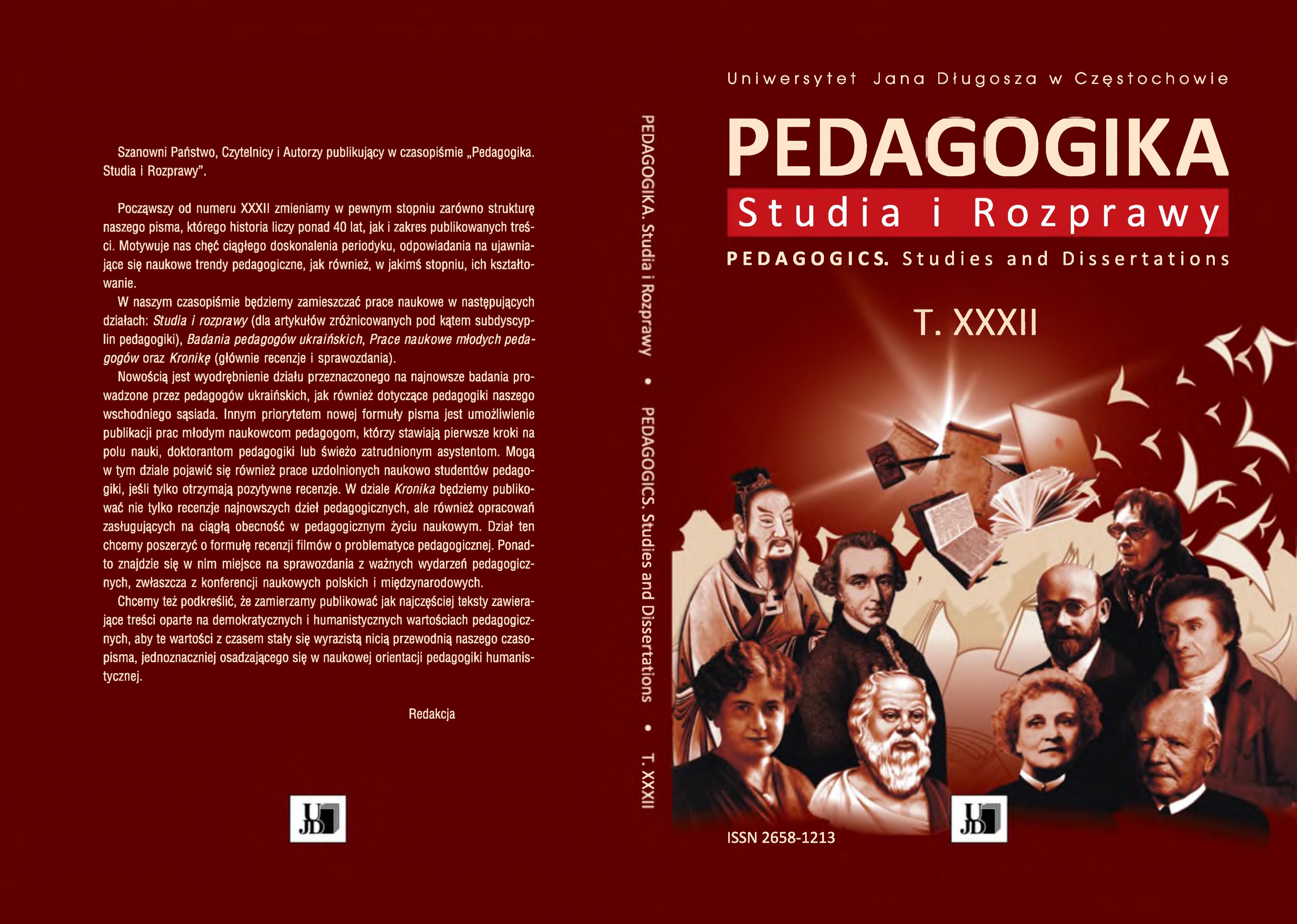Internet addiction - challenges and strategies for dealing with digital dependency
DOI:
https://doi.org/10.16926/p.2023.32.13Keywords:
Internet, addiction, web, smartphon, children, new technologiesAbstract
In today's world, media are an integral part of everyday functioning. Regardless of age, everyone uses them every day. One of the most popular mediums in the last decade is the Internet, which not only enables communication with other people, but is also a source of a lot of information. Using the Internet offers many possibilities. One of them is getting to know other people and their opinions. Unfortunately, excessive use of the Internet leads to addiction. Cyberspace also carries numerous threats. Especially young and inexperienced people are at risk of being harmed by someone they do not know and have never seen. The phenomenon of Internet addiction is a huge problem experienced by an increasing number of users all over the world. Long-term use of electronic devices, activity on social media and even obsessive involvement in online games are becoming more widespread and are generating serious side effects among various age groups. These are health issues such as difficulties with sleep or concentration, increased stress levels, depression, as well as decreased effectiveness and, above all, difficulties in maintaining social relationships. In this article, we will focus on the problem of Internet addiction. We will identify the difficulties that arise in the context of this phenomenon and present some methods that may be useful for people who want to overcome their digital dependencies. We will also present practical approaches and tools that allow you to regain control over your Internet use.
References
Augustynek, A. (2010), Uzależnienia komputerowe. Diagnoza, rozpowszechnienie, terapia. Warszawa: Difin.
Błachnio, A., Przepiórka, A., Rowiński, T. (2014). Dysfunkcjonalne korzystanie z internetu – przegląd badań. Psychologia Społeczna, 9(31), 378–395.
Garcia-Oliva, C., Piqueras, J.A., (2016). Experimental avoidance and technological addictions in adolescents. Journal of behavioral addictions, 5(2), 293–303.
Goban-Klas, T., Sienkiewicz, P. (1999). Społeczeństwo informacyjne: szanse, zagrożenia, wyzwania. Kraków: Wydawnictwo Fundacji Postępu Telekomunikacji.
Jędrzejko, M. (2013). Dzieci i nowe multimedia. Warszawa: Studio Poligraficzne Edytorka.
Kozaczuk, F., Urban, B. (2001). Profilaktyka i resocjalizacja młodzieży. Rzeszów: Wydawnictwo Wyższej Szkoły Pedagogicznej.
Kozłowska, A., (2006). Oddziaływanie mass mediów. Warszawa: SGH.
Krzyżak-Szymańska, E. (2018). Uzależnienia technologiczne wśród dzieci i młodzieży. Kraków: Oficyna Wydawnicza Impuls.
Kuć, M. (2010). Wiktymologia. Warszawa: Wydawnictwo C.H. Beck.
Łysek, J. (2009). Zagrożenie niekontrolowanego korzystania z Internetu przez dzieci. Nauczyciel i Szkoła, 1–2, 189–209.
Olszewska, E. (2013). Uzależnienie od telefonu komórkowego jako nowe wyzwanie edukacji dla bezpieczeństwa. Zeszyty Naukowe WSOWL, 4(170), 16–27. Przewłocki, R. (2017). Uzależnienia opioidowe, mechanizmy, terapia. Tydzień Mózgu, 1–3, 28–33.
Skrzypczak, J. (1999). Popularna encyklopedia mass mediów. Poznań: Kurpisz.
Spitzer, M. (2016). Cyberchoroby. Jak cyfrowe życie rujnuje nasze zdrowie. Słupsk: Dobra Literatura.
Tomczyk, Ł. (2018). FOMO (Fear of missing out) – Wyzwanie diagnostyczne i edukacyjne. Lubelski Rocznik Pedagogiczny, 37(3), 139–150; http://dx.doi.org/ 10.17951/lrp.2018.37.3.
Walrave, M., Herman, W. (2009). Skutki cyberbullyingu– oskarżenie czy obrona technologii? Cyberprzemoc, 1, 27–46.
Wąsowicz, G., Styśko-Kunkowska, M. (2015). Młodzież w Internecie, zagrożenie uzależnieniem. Warszawa: Wydawnictwo Naukowe Scholar. Zajączkowski, K. (2000). Profilaktyka zachowań dewiacyjnych dzieci i młodzieży. Toruń: Wydawnictwo Adam Marszałek.


